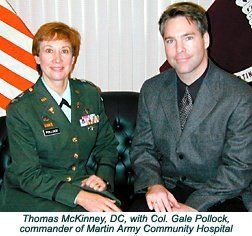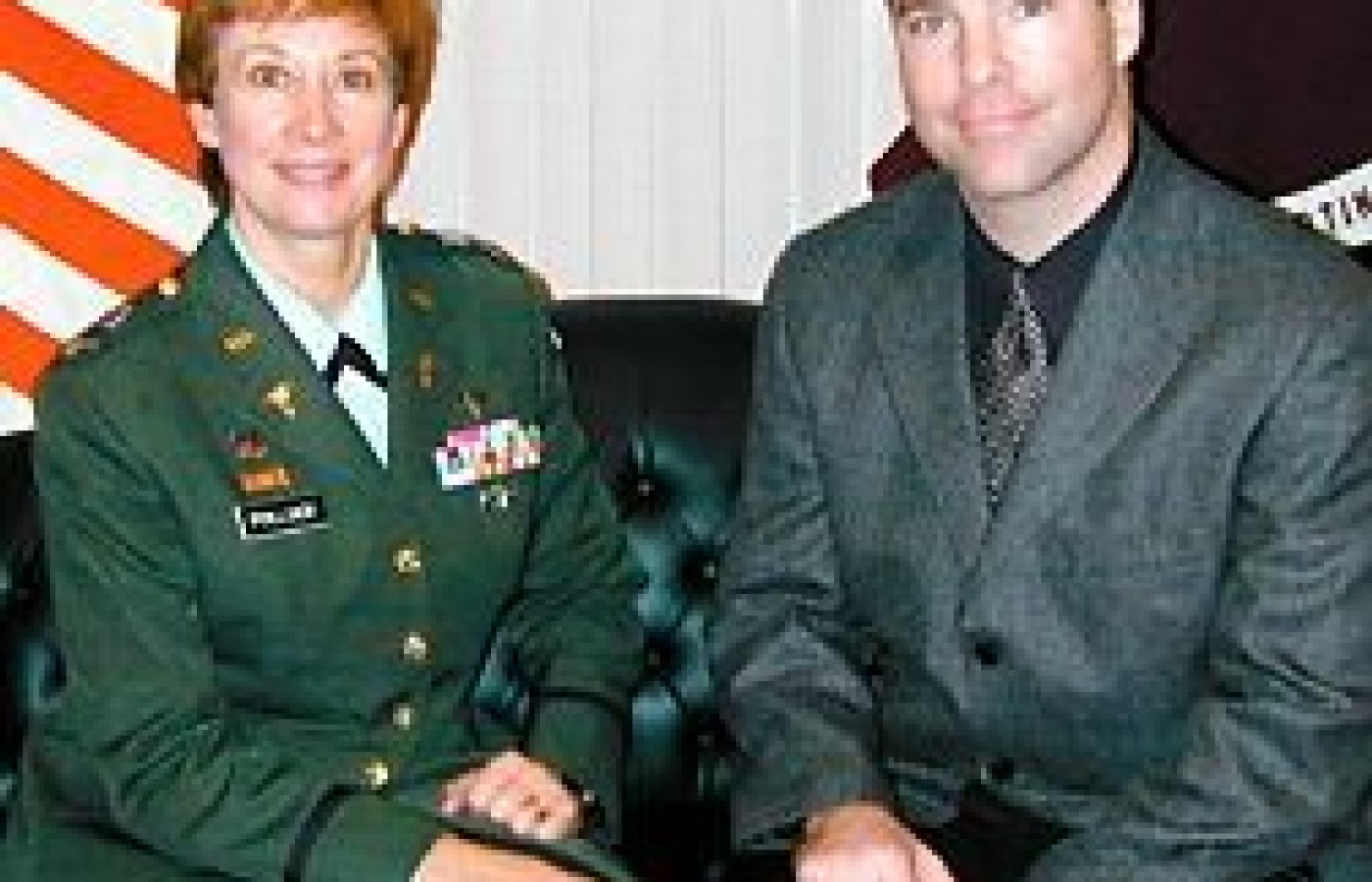New York's highest court of appeals has held that no-fault insurers cannot deny no-fault benefits where they unilaterally determine that a provider has committed misconduct based upon alleged fraudulent conduct. The Court held that this authority belongs solely to state regulators, specifically New York's Board of Regents, which oversees professional licensing and discipline. This follows a similar recent ruling in Florida reported in this publication.
DC Garners "Best Patient Satisfaction" Rating at Georgia Army Hospital
In 1995, the National Defense Authorization Act mandated that the U.S. Congress determine the cost-effectiveness of chiropractic treatment for military personnel. For the next three years, 10 military sites utilizing DCs were compared to three that did not. The Department of Defense (DoD) was required to maintain these services until Sept. 30, 2000. Soon afterward, President Clinton signed the 2001 National Defense Authorization Act, requiring full implementation of chiropractic benefits, to be phased in over the next five years throughout three military branches.

G. Thomas McKinney, a 1997 graduate of Parker College of Chiropractic, was accepted into the program and assigned to treat patients at Martin Army Hospital at Fort Benning, Ga. Established in 1918 as the "Home of the Infantry," Fort Benning is headquarters for the U.S. Army Infantry Training Brigade; U.S. Infantry School; Ranger Training Brigade; Airborne School; and School of the Americas.
Dr. McKinney acknowledged his good fortune at being accepted into the DoD program at Fort Benning: "Because the program was formally established prior to my arrival, the entire process of credentialing and affiliation was well-developed and streamlined for me."
However, justifying the program was not without its challenges, according to Dr. McKinney: "The initial credentialing forms were for osteopathic and allopathic physicians, so some of the items did not apply, which required some explaining on our part about the differences in training and licensure for chiropractic physicians. We also had to clarify our scope of care and education in order to expand our privileges to include ordering MRIs, CTs, bone scans, and other advance imaging and diagnostic testing."
Dr. McKinney's journey may not have always been an easy one, but it seems to have paid off, personally and professionally. At the hospital's recent "doctor's day" luncheon, Dr. McKinney was recognized for having the best patient-satisfaction rating of all the health-care providers at the facility.
Dr. McKinney recalled, "All the physicians were gathered together to celebrate, and awards were given out to a few military doctors. As civilian contract physicians, my partner (Palmer graduate Dr. Jerry VanderHeyden, the only other DC assigned to the hospital) and I were not eligible for formal awards due to military regulations. We were both naturally very surprised and honored when we heard our names announced, at the beginning of the presentations, as two of the doctors with the highest patient satisfaction ratings of all health-care providers on post!"
"I was in first place, and Jerry was in third place," Dr. McKinney elaborated. "The rating was based on patient comment cards and other feedback metrics that the post monitors monthly on both provider and clinic levels. The moment was especially significant for us since only two years prior, there had been some problems in the program, and we were not viewed in the best light. To have turned the program around in such a big way, and to be noticed by the hospital command staff was extremely fulfilling. Finally, as if that was not enough, we received a dozen or more 'high-fives,' 'thumbs-ups,' and hoots and calls from our medical and osteopathic physician colleagues at the announcement!"
Subsequently, and partially based on this recognition, Dr. McKinney received the Alumni of the Year award from his alma mater, Parker College of Chiropractic. In addition to his work at Martin Army Hospital, he has obtained his masters in science and management degree and became a member of the Association of Military Surgeons of the United States (AMSUS), and a peer reviewer for its professional research journal, Military Medicine.
With 10 years as an Air Force reservist specializing in aeromedical evacuation, and firsthand observations of the "world of hurt" servicepersons are forced to live in during duty, Dr. McKinney said of his patients: "Since the soldiers are equivalent to highly trained athletes that are constantly in the competitive phase, mine is most similar to a sports chiropractic practice. Most of the conditions I treat would fall in the 'chronic, repetitive, overuse syndrome' category, followed by acute traumatic injuries from military training. Perhaps 90 percent or better of my practice is made up of neck, mid-back and low-back pain cases, but in addition to that, I see a fair number of headaches, shoulder and knee pain, and carpal tunnel syndromes. As providers have become more comfortable with my abilities, they have sent me several visceral conditions, from orchalgia, to abdominal pain, to noncardiac chest pain, with fairly good success."
According to Dr. McKinney, one of the secrets of his success is simple: listening to patients. "I spend quite a bit of time evaluating and modifying the soldiers' dietary and training regimens to maximize their healing time and ultimate performance. At least half of my time with them is spent educating them, not only about chiropractic, but also about their medical conditions. It is this time, primarily, that my patients have told me makes me stand out among my peers; many primary-care providers are often too overburdened to give in-depth answers to patients' health-care concerns."
Drs. McKinney and Vanderheyden have treated more than 1,200 patients since 1999. Noted Dr. McKinney: "Additionally, I picked up the patient load of the previous doctor, which probably adds up to about 1,500 total patients. Of those, approximately 300 are regular patients."
"Prior to our arrival, several medical doctors, osteopaths, physical therapists and physicians' assistants did spinal manipulation," Dr. McKinney continued. "Research was emerging in the medical literature about its benefits, and many providers had developed a healthy curiosity. Since the chiropractic clinic has opened, I have seen a much greater tendency in those providers to send patients to me instead, probably due to the positive responses they have seen in their patients, and their resultant increased confidence in my abilities to help them."
With a patient list that includes Rangers, trainees and retirees, Dr. McKinney emphasized the pressing need for DCs in the armed forces: "The military is filled with hard-working, hard-playing individuals that use and abuse their bodies on a daily basis, which makes it a utopia for a chiropractic physician. Since the passage of the defense act that made the program permanent, the military services will continue to have a strong need for chiropractors in the near future."
While working on a military installation was rewarding, Dr. McKinney was pragmatic about the opportunity: "Since our credentialing is based on that of our allopathic and osteopathic counterparts, selection is fairly rigorous. The ideal candidate should have a military and medical background, in addition to chiropractic, and should possess a bachelor's degree. The vast majority of military physicians also hold board certifications in their specialties, so I suspect a diplomate certificate will soon become mandatory for new military chiropractors."
"Perhaps the most important requirement," added Dr. McKinney, "is the desire to work as part of a complete health-care team, with openness to divergent opinions on patient care from providers with different education, training and experiences."
Editor's note: Dr. Vanderheyden, now at Andrews Air Force Base in Maryland, will be transferring to Fort Stewart, Ga., to head its chiropractic program. Dr. McKinney told us that his wife, Rhonda - also a chiropractor and recently accepted into the DoD program - is assisting Dr. Vanderheyden in transitioning to the site. Dynamic Chiropractic will report on further developments involving Drs. McKinney, McKinney and Vanderheyden in future issues.
Jim Harrison, associate editor



